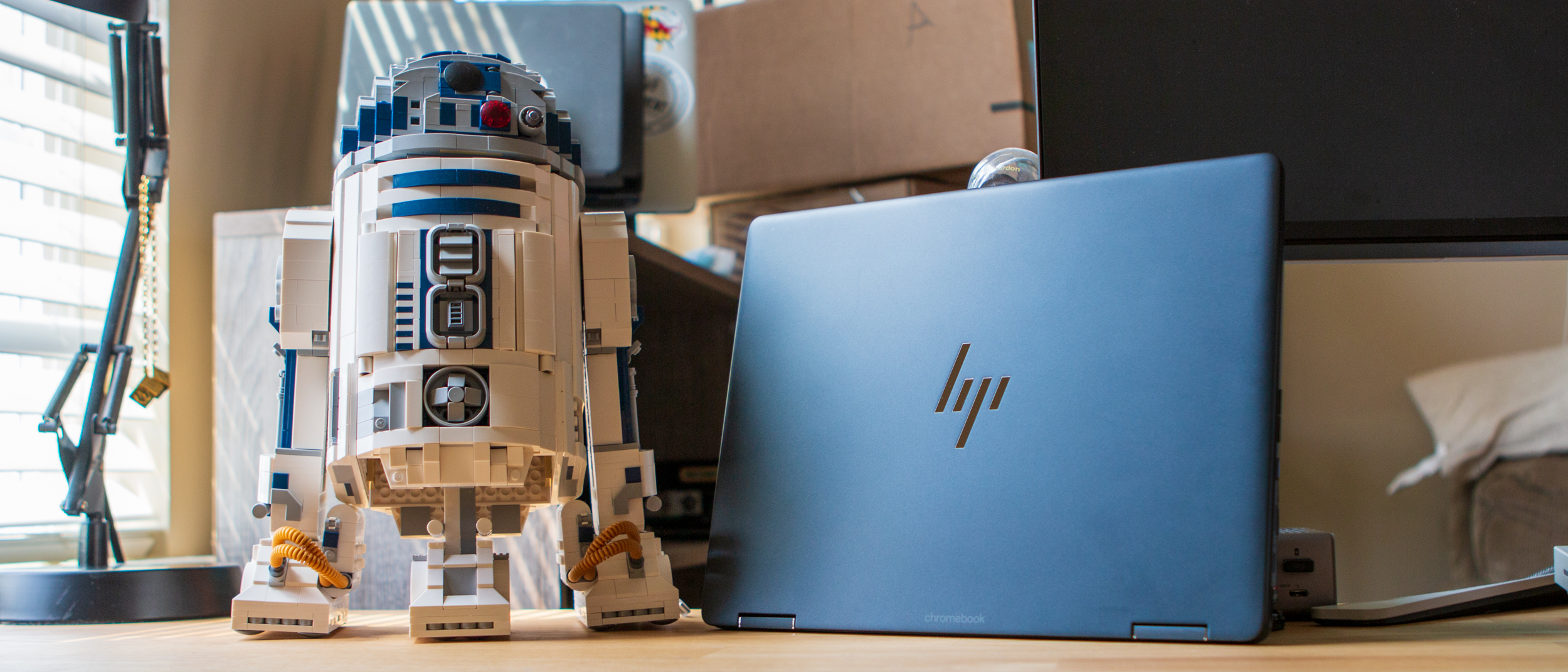Android Central Verdict
HP is out to prove that ChromeOS can be taken seriously and compared to the best laptops on the market. The Elite Dragonfly Chromebook is the most feature-rich and complete Chromebook we've ever seen, but it comes at a steep price.
Pros
- +
The haptic trackpad is absolutely phenomenal
- +
3:2 display is beautiful and vibrant
- +
Included magnetic Digital Pen is a nice touch
- +
Performance rivals Windows and macOS laptops
Cons
- -
Very expensive
- -
Difficult to purchase
- -
Battery life is a bit disappointing
Why you can trust Android Central
Ever since I joined Android Central in a full-time capacity, I’ve been taking a closer look at Chromebooks and the ChromeOS ecosystem. During this time, there are a lot of different things that I’ve learned — and am still learning — about how the Chromebook market operates compared to others.
Unlike the best MacBook or the best Windows laptop, the best Chromebooks aren’t going to cost you an arm and a leg, and that’s kind of the point. ChromeOS has been optimized so that you can get by with a cheap Chromebook for under $200, but the market has been expanding quite rapidly over the last year.
Some of this is thanks to the leaps and bounds that Intel made with its 11th-gen chipsets, sporting powerful onboard graphics (Intel Iris Xe). These improvements made us more excited after the 12th-gen SoCs were announced, promising even better performance. Then, it became a waiting game, as Chromebook makers like HP, Acer, ASUS, and others had to first announce, then release, these new Chromebooks.
At this point, the floodgates are starting to open a bit, as we’ve seen with the recent release of the new Chromebook Spin 714, and today’s focus, the HP Elite Dragonfly Chromebook.
HP Elite Dragonfly Chromebook: Price and Availability

The HP Elite Dragonfly Chromebook was announced at CES 2022, and was originally expected to launch in April. However, the release date was pushed back for various reasons, but HP’s latest Chromebook is now available for purchase. Pricing for the Elite Dragonfly Chromebook varies, but starts at $1,149 for the base model and goes all the way up to $1,799, depending on your configuration.
Unfortunately, this is where things get a bit odd if you’re trying to go through HP directly to pick one of these up. There are actually three different variants listed on HP’s website; a standard non-configurable model, a non-configurable Enterprise model, and then a “customizable” version.
| Category | HP Elite Dragonfly Chromebook |
|---|---|
| Display | 13.5-inch, 3:2, 400 or 1000 nits peak brightness |
| Resolution | 1920x1280 / 2256x1504 |
| Processors | Intel Core i3-1215U / Intel Core i5-1235U / Intel Core i5-1245U / Intel Core i7-1265U |
| Graphics | Intel Iris Xe |
| RAM | 8GB / 16GB / 32GB |
| Storage | 128GB / 256GB / 512GB |
| microSD card slot | ✔ |
| Camera | 5MP w/ built-in privacy switch |
| Ports | 2x Thunderbolt 4 (USB-C), 1x USB-A (USB 3.2 Gen 2), full-size HDMI, microSD card slot, SIM card slot, 2.5mm stereo combo jack |
| Additional features | Haptic trackpad, backlit keyboard, fingerprint scanner |
| USI Stylus Support | HP USI Digital Pen included (w/ wireless [magnetic] charging) |
| Connectivity | Wi-Fi 6E, Bluetooth 5.2 or 5.3 (Enterprise), optional LTE |
| Battery | 4-cell, 50-WHr |
| Charging | USB-C, Fast Charge (90% in 90 minutes) |
| Colors | Dragonfly Blue |
| Dimensions | 294.5 x 221.85 x 16.6mm |
| Weight | 2.83 pounds |
| AUE date | June 2030 |
The first version of which is for general consumers; sporting Intel’s Core i3-1215U chip, 8GB of RAM, and a 128GB SSD to go along with a 13.5-inch touchscreen display with a QHD+ resolution.
Get the latest news from Android Central, your trusted companion in the world of Android
With the non-configurable Enterprise model, this bumps the chipset up to Intel’s Core i5 with vPro, but the display is bumped down to WUXGA+ (1920 x 1200). On the upside, the inclusion of the Core i5 chip brings support for Intel’s excellent Iris Xe graphics, even with lowering the display resolution.
Lastly, there’s a “customizable” model listed on HP’s website, starting out with the same Intel Core i3 and 8GB of RAM as the aforementioned general consumer version. But things only go up, get more impressive, and much more expensive from there.
HP Elite Dragonfly Chromebook: Premium looks
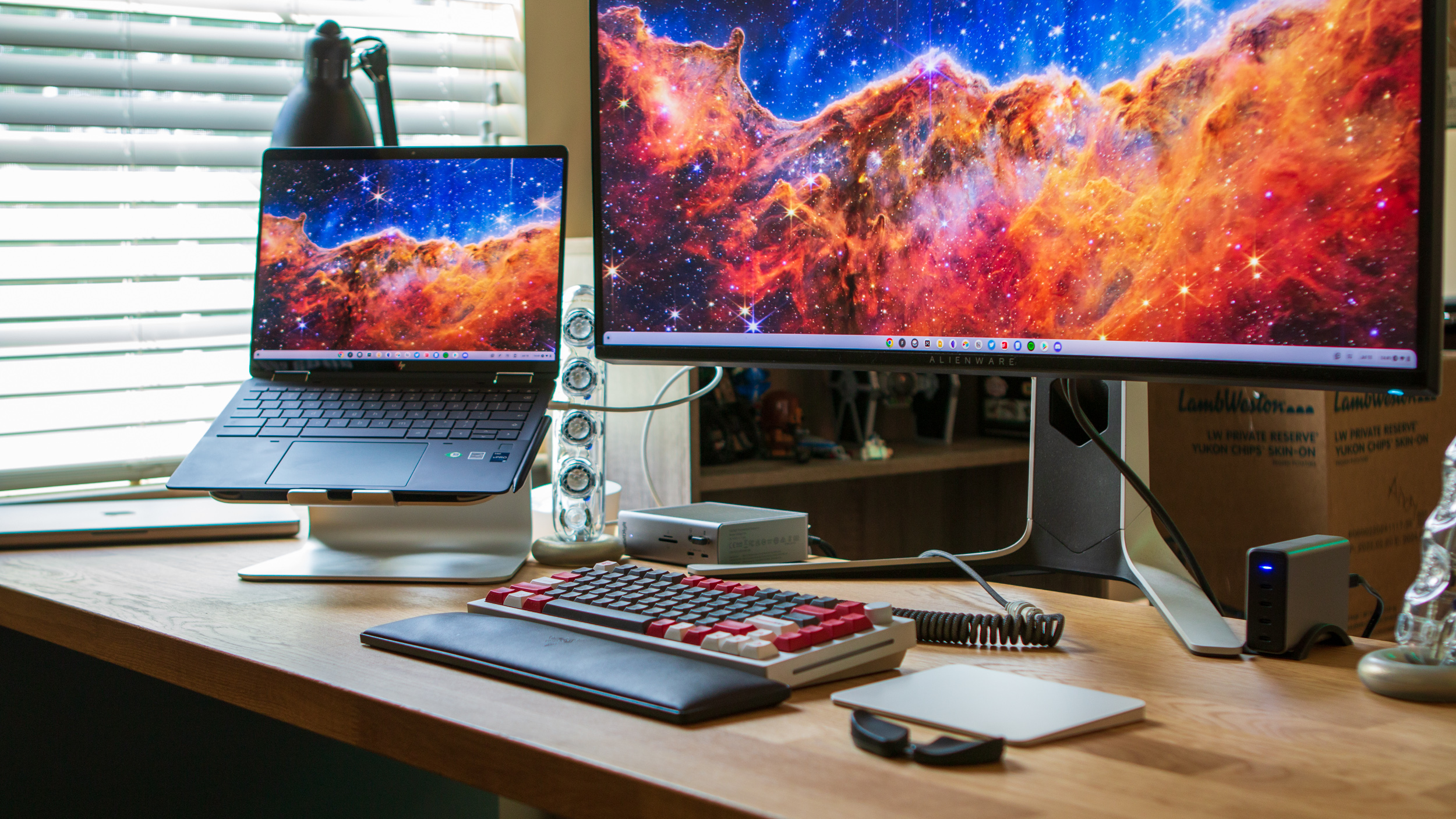
As someone who hasn't really looked outside of the MacBook world for computers — save for the Surface Laptop Studio and a couple of gaming laptops — I didn't know that the "Dragonfly" moniker meant something. Turns out, this is HP's flagship lineup of computing devices, as evidenced by the HP Dragonfly G3 that our sister site, Windows Central, was able to get their hands on.
What this means for HP's flagship Chromebook is that you're getting the best build quality that HP has to offer. The Dragonfly Blue finish is just sublime, but you'll definitely want to keep a microfiber cloth around because it captures fingerprints like no other. On the outside of the case, HP's glossy logo is embossed on the lid, with a subtle "Chromebook" logo near the bottom hinge.
As for port selection, the Dragonfly Elite Chromebook surely won't disappoint. There are dual Thunderbolt 4 (USB-C ports), a single USB-A Gen 3.2 port, full-size HDMI, microSD, 3.5mm audio combo jack, and even a SIM card slot.
And in the box, HP includes its USI Digital Pen, which like the HP Chromebook x2 11, magnetically attaches to the side. When attached, the stylus will also be charged up, ensuring that your stylus has plenty of juice for whenever you need it.
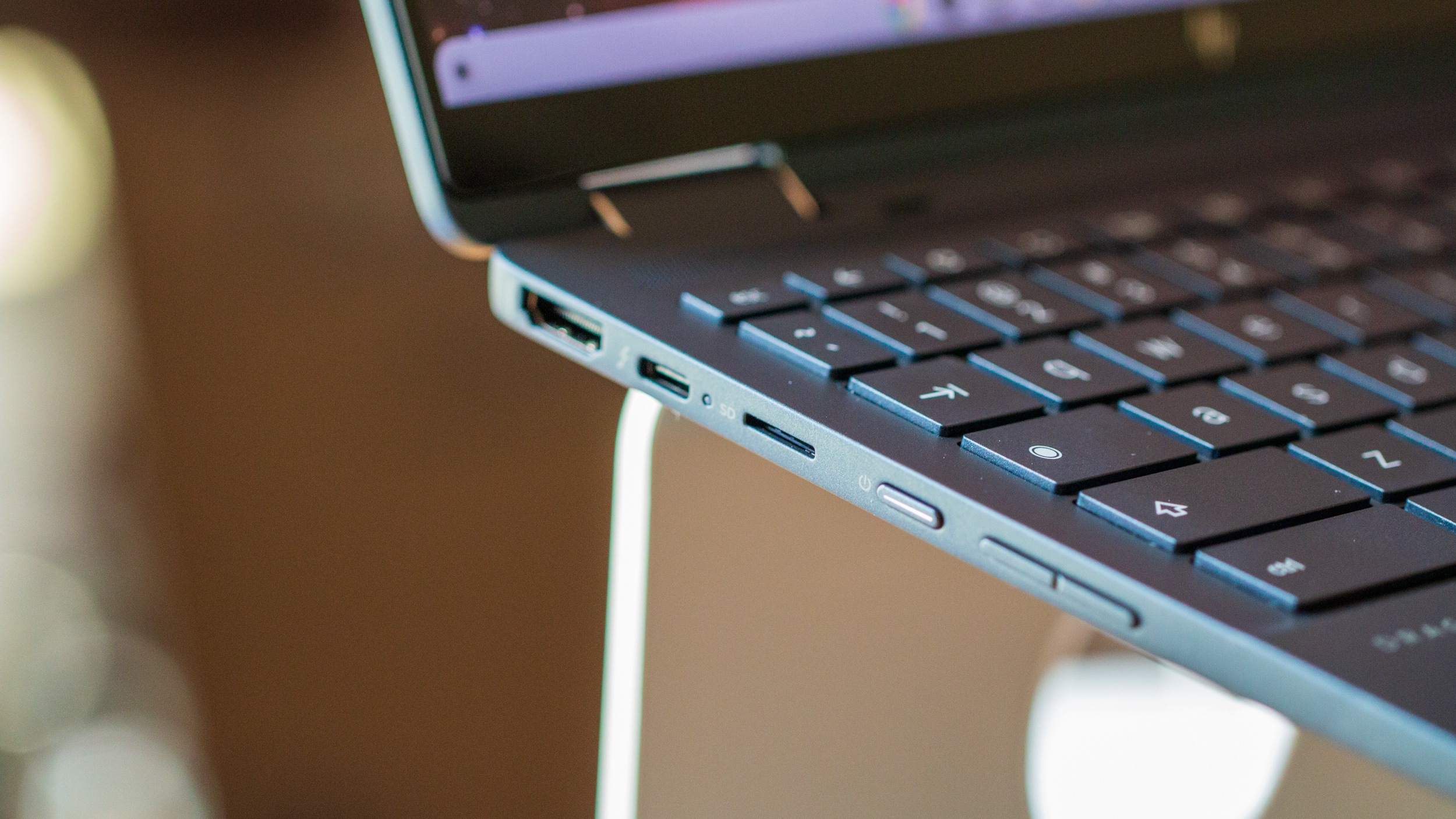
Coming as a slight surprise, and something that we almost forgot about really, is that the Digital Pen is not a USI 2.0 stylus. But unlike the Lenovo Chromebook Duet 3, this isn't a problem, as the Dragonfly Elite Chromebook doesn't use a different type of display and works with all of the best USI stylus pens that are currently available.
Considering that one of the new standards for USI 2.0 is magnetic charging, there were hopes that the Digital Pen was "upgraded," but it's definitely not a deal breaker or anything.
Opening up the lid, and you're greeted with a gorgeous 13.5-inch touchscreen display, complete with a 5MP webcam embedded in the top bezel. And kudos to HP for including a privacy switch that is found right above the camera, so you can physically "disable" your webcam when you're not using it. There are different versions of the display available, with a WUXGA+ (1920x1280) or QHD+ (2256x1504) resolution.
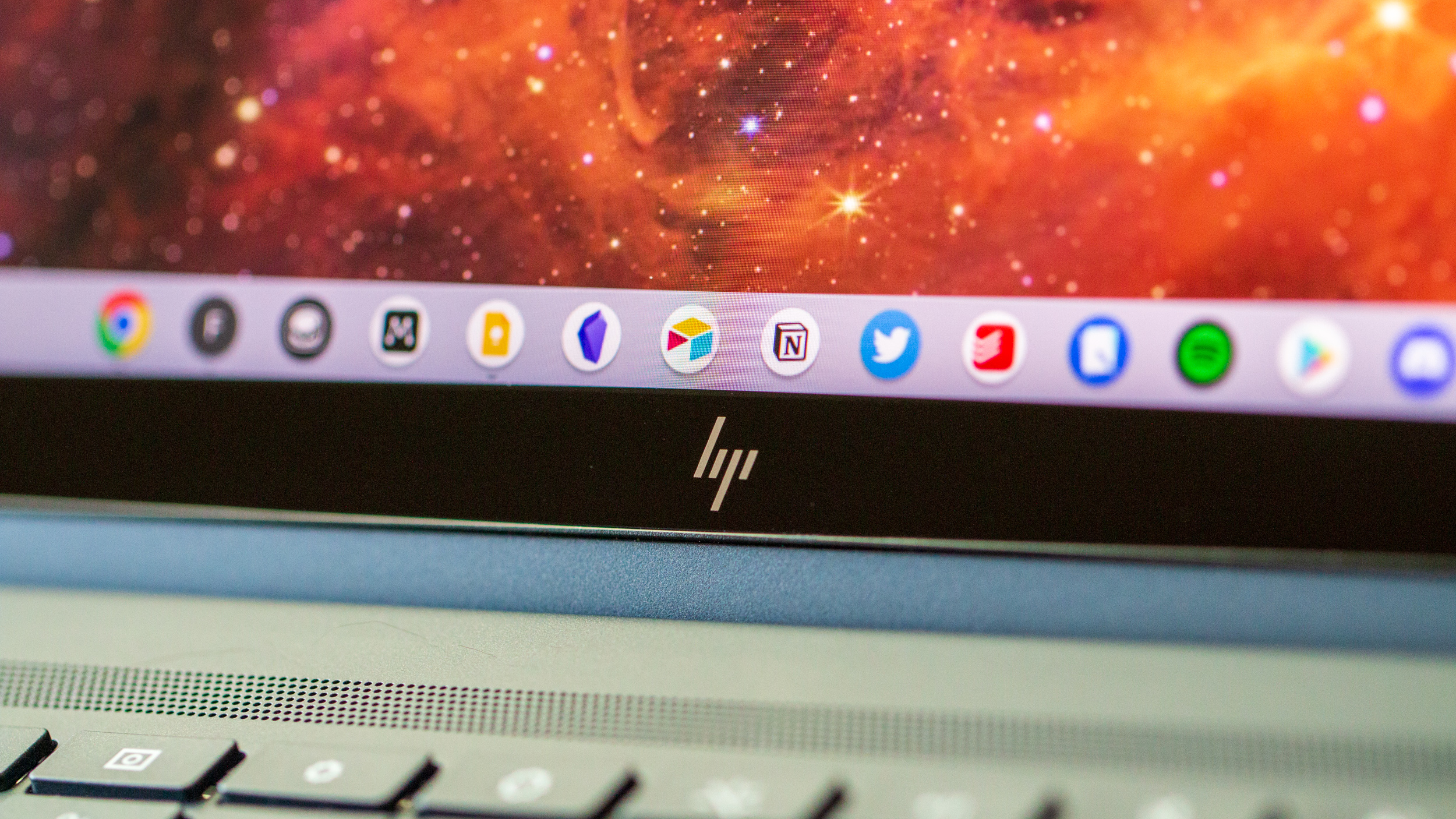
And while the most common models max out at 400 nits of peak brightness, there's an "HP Sure View" version available maxing out at a whopping 1,000 nits. We weren't able to test that model out, as ours is the QHD+ variant with 400 nits.
HP packed a full-size backlit keyboard into the deck of the Dragonfly Elite, and it's immediately apparent that this is one of the most comfortable keyboards out there. The keys themselves have a soft touch, but there's definitely a chance that some people might think the keyboard is a bit "mushy."
It's not a bad thing, but something to keep in mind if you aren't a fan of keyboards with shorter travel. There's also a fingerprint scanner on the right side of the wrist-rest, which is great for quickly unlocking, but that's it. We're still keeping our fingers crossed that Google makes it so you can have an integrated scanner to unlock things like Google Passwords or other apps.
HP Elite Dragonfly Chromebook: That sweet, sweet trackpad
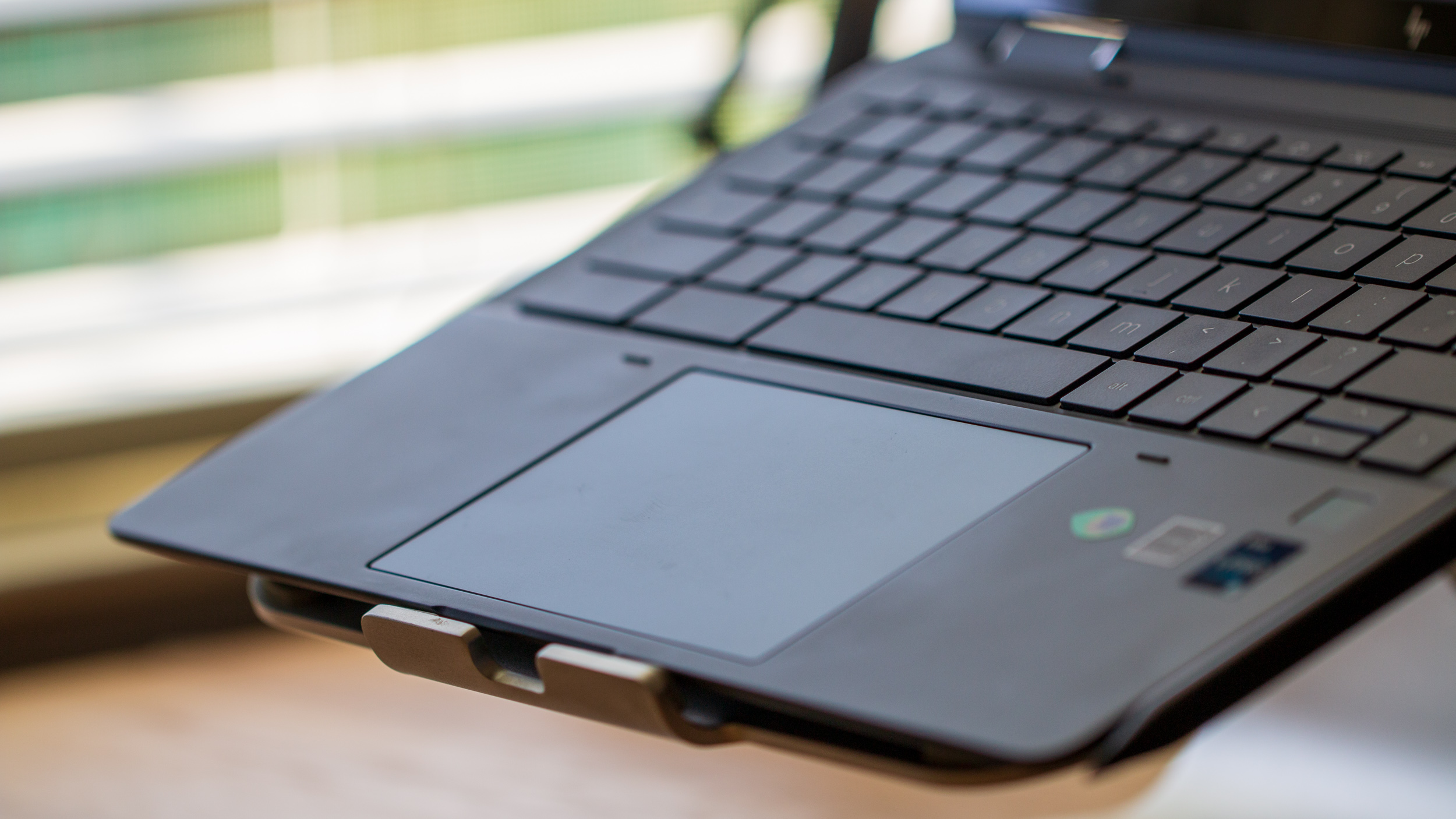
As someone who uses a 16-inch 2021 MacBook Pro on a daily basis, the keyboard and trackpad experience is top-notch, and I had yet to find something that could come close.
So when the Elite Dragonfly Chromebook was announced sporting a haptic trackpad, I really wanted to try this out to see how it stacks up against the MacBook Pro. Apple is notorious for having a great trackpad, even after the company took far too long to fix its broken butterfly keyboard.
Without beating around the bush, the Dragonfly's haptic trackpad is everything I was hoping for, and more. Essentially, a haptic trackpad doesn't include any moving parts, which is good for a few reasons. You can push down literally anywhere on the trackpad and will get a response, but also removes the potential for debris to interfere, improving the overall durability and longevity.

HP even took things a step further, working with Google to implement some helpful software tweaks to ChromeOS. Not only can you turn the haptic feedback on or off, but you can also adjust the "click strength" (how hard you have to "push").
When you're doing things like snapping windows or switching between desks, the Dragonfly provides the slightest bit of feedback, which is simply sublime and downright satisfying.
In practice, using this trackpad just further cemented my hope for a company to make a Magic Trackpad designed for Chromebooks. The problem is that when you want to use the Dragonfly with an external monitor connected to a docking station, you miss out on all of the trackpad fun. Here's to hoping that HP or someone else takes up the mantle in the near future and brings an external haptic trackpad to the masses.
HP Elite Dragonfly Chromebook: Performance
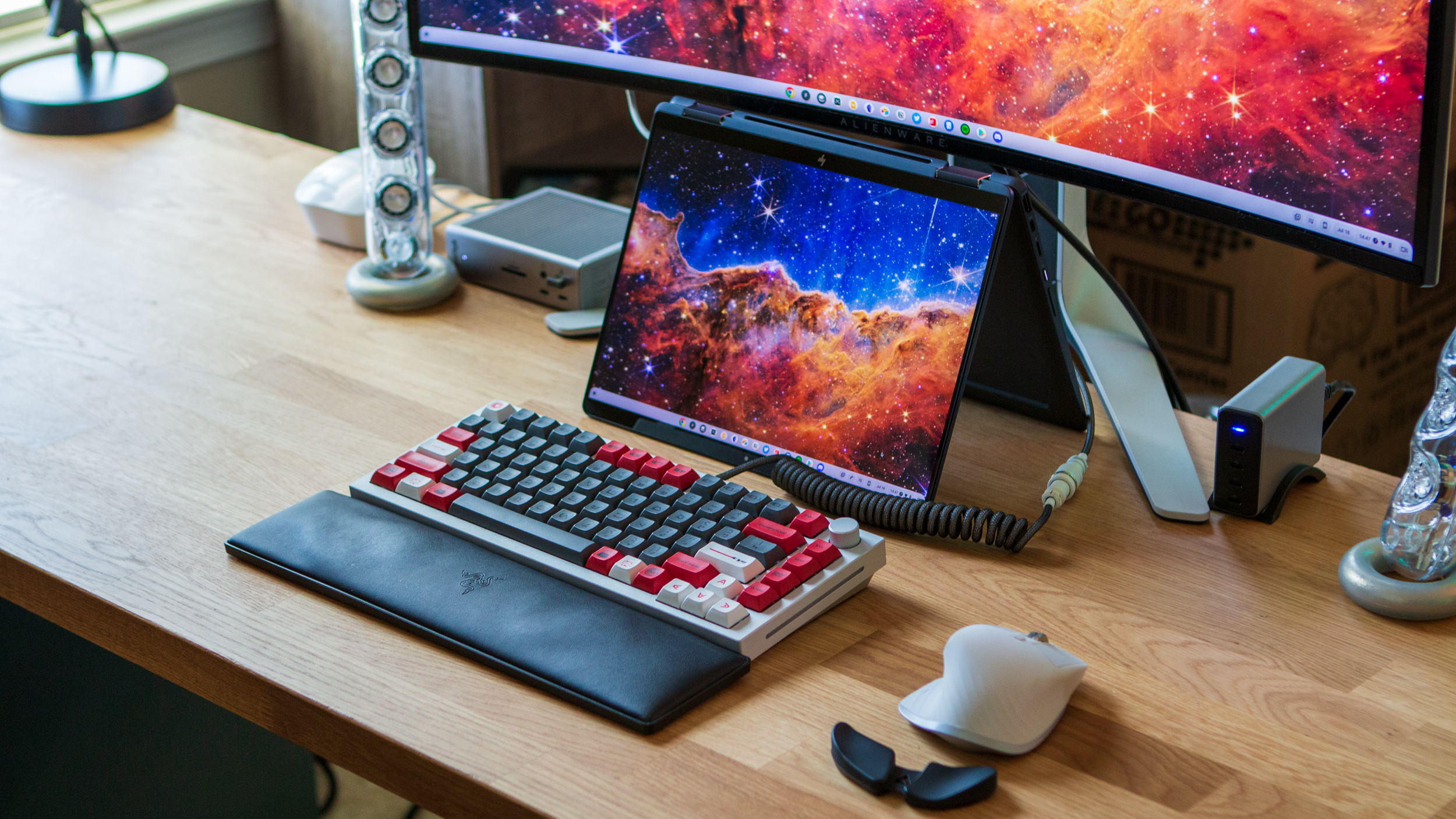
When you look at the spec sheets and see Intel's 12th-gen processors onboard, you expect great performance. Thankfully, the Dragonfly doesn't disappoint, I've only really run into a few hiccups here and there.
Docking the Dragonfly to my 34-inch ultrawide monitor is just as great as you would expect. But if you have a monitor with faster refresh rates, you'll want to jump into Chrome settings to make adjustments.
Unlike some of the Chromebooks that I've recently tested, the Dragonfly does include a few fans to help keep everything from overheating. But something I've come to notice is that as soon as I fire up a few tabs when connected to my external monitor, the fans start spinning up and it's like a jet engine taking off. This only lasts for maybe a minute, before the fans go down to a dull roar, but it's definitely jarring when you hear it for the first time.
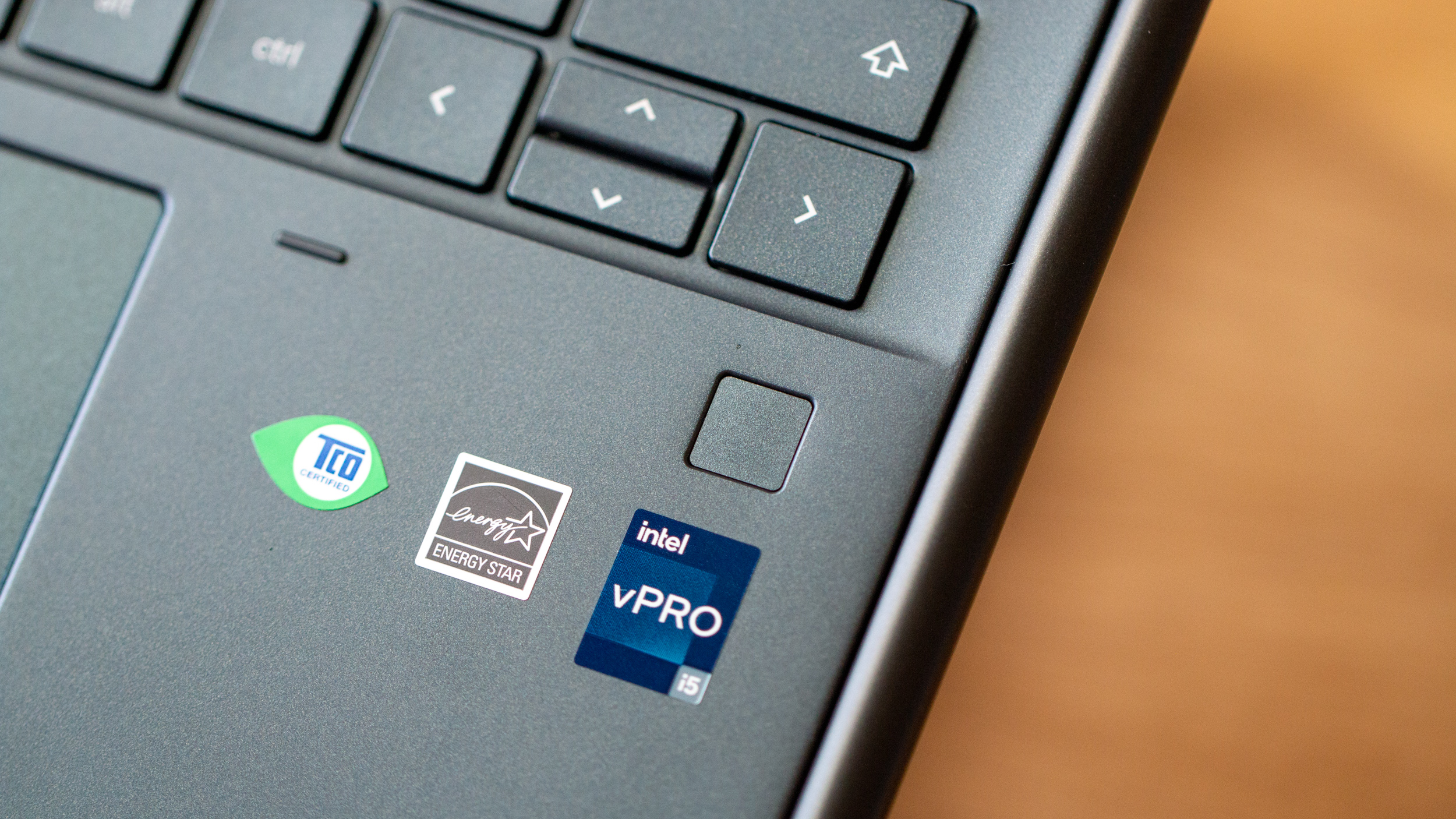
There aren't all that many Chromebooks available powered by an Intel 12th-gen chip, so we don't have much in the way of direct comparison. As a bit of a teaser, the Chromebook Spin 714 just landed in the office, but we haven't started putting that through its paces yet.
But what we can do is provide a comparison to the ASUS Chromebook CX9 that we have in the office, powered by Intel's 11th-gen Core i7. For reference, the following benchmarks were recorded with these configurations:
- ASUS Chromebook CX9: Intel Core i7-1165G7 with 16GB of RAM
- HP Elite Dragonfly Chromebook: Intel Core i5-1245U with 8GB of RAM
| Test | HP Elite Dragonfly Chromebook | ASUS Chromebook CX9 |
|---|---|---|
| Octane | 77136 | 22190 |
| Speedometer | 109 | 56.5 |
| Jetstream | 196.311 | 144.393 |
| MotionMark | 663.30 | 528.36 |
If you're looking at these results and trying to figure out what each one is, here's a quick synopsis:
- Octane 2.0: A benchmark that measures a JavaScript engine's performance by running a suite of tests representative of certain use cases in JavaScript applications.
- Speedometer: A browser benchmark that measures the responsiveness of Web applications.
- Jetstream: A JavaScript and WebAssembly benchmark suite focused on the most advanced web applications.
- MotionMark: A graphics benchmark that measures a browser's capability to animate complex scenes at a target frame rate.
The most surprising difference that we found came in Octane 2.0, as the 12th-gen Intel Core i5 performs almost 250% better than the 11th-gen Core i7. We ran these tests a few different times just because we couldn't believe what we were seeing.
The Speedometer benchmarks represented about a 97% increase, also rather surprising. But MotionMark and Jetstream at 25% and 35%, respectively, were improvements we expected to see.
Regardless, it's clear that Intel has found some magic to work with when developing its latest processors, and that's good news for users.
HP Elite Dragonfly Chromebook: Back down to Earth
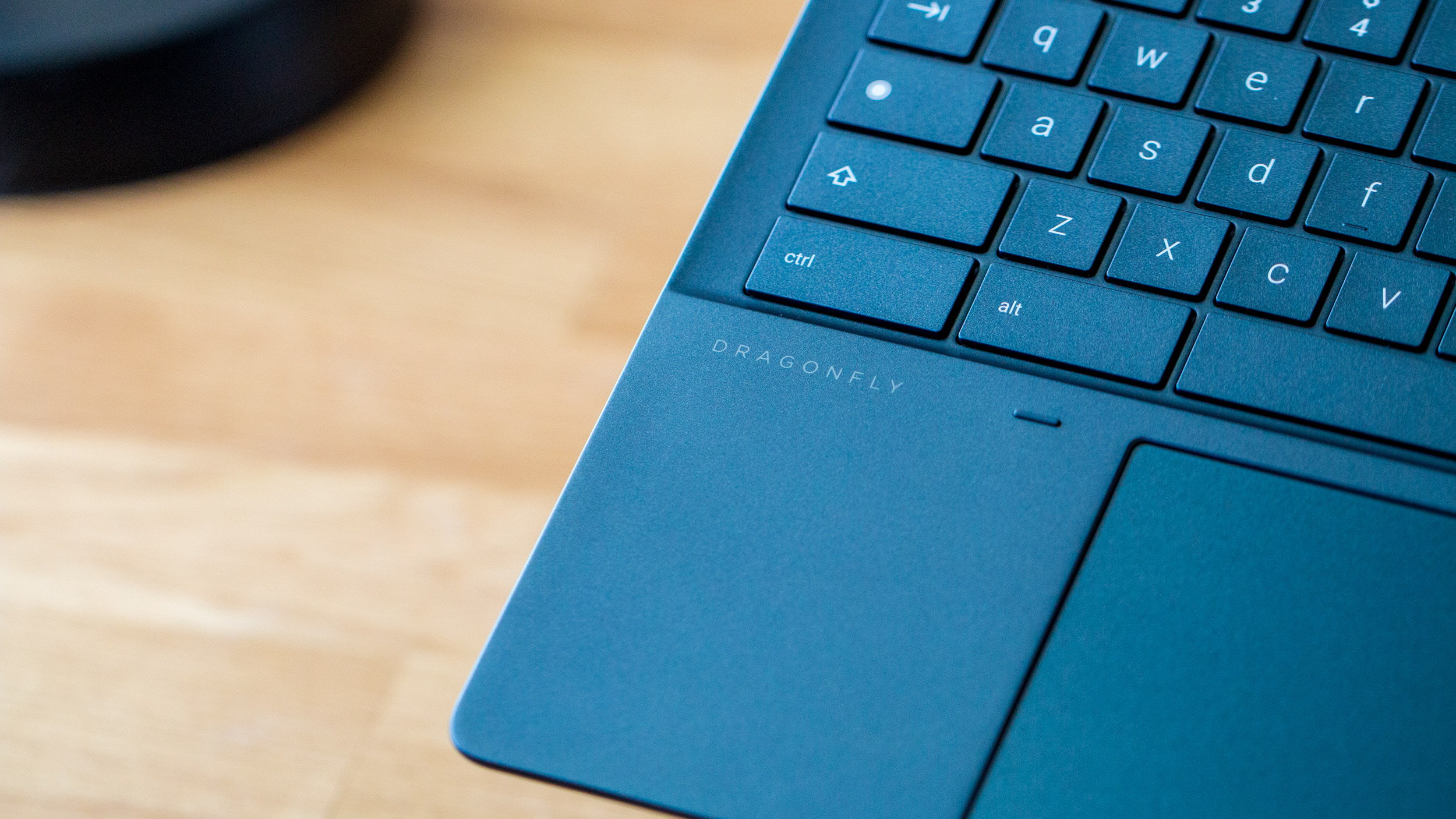
From a performance standpoint, there was really only one hiccup that I had to deal with from time to time. Occasionally, I would have the Chromebook connected to my aforementioned ultrawide monitor, with a few windows open. And for whatever reason, the Dragonfly just restarted all by itself.
The fans spun up, but everything worked fine until both my monitor and the Chromebook's display just went blank. It's something that has happened just two or three times, but it was still a bit odd.
Before diving into the biggest caveat of them all, it's important to talk about the Dragonfly's battery life. Given all of the power that's available in this slim, lightweight, and downright impressive form factor, the battery life doesn't quite match up. Most days, I found myself needing a charger after just three or four hours, with the longest I was able to push things to about six hours.
It's definitely a stark contrast from something like the Kompanio 828-powered Chromebook 514, or the Chromebook Duet 5. And perhaps HP knew that this might be the case with its flagship Chromebook, as the Dragonfly counteracts the subpar battery life by offering quick charging.
You can plug in the Dragonfly to a USB-C charger and will be able to get 90% of battery life in right around 90 minutes. It's definitely a nice touch, but obviously, I would have preferred longer battery life.
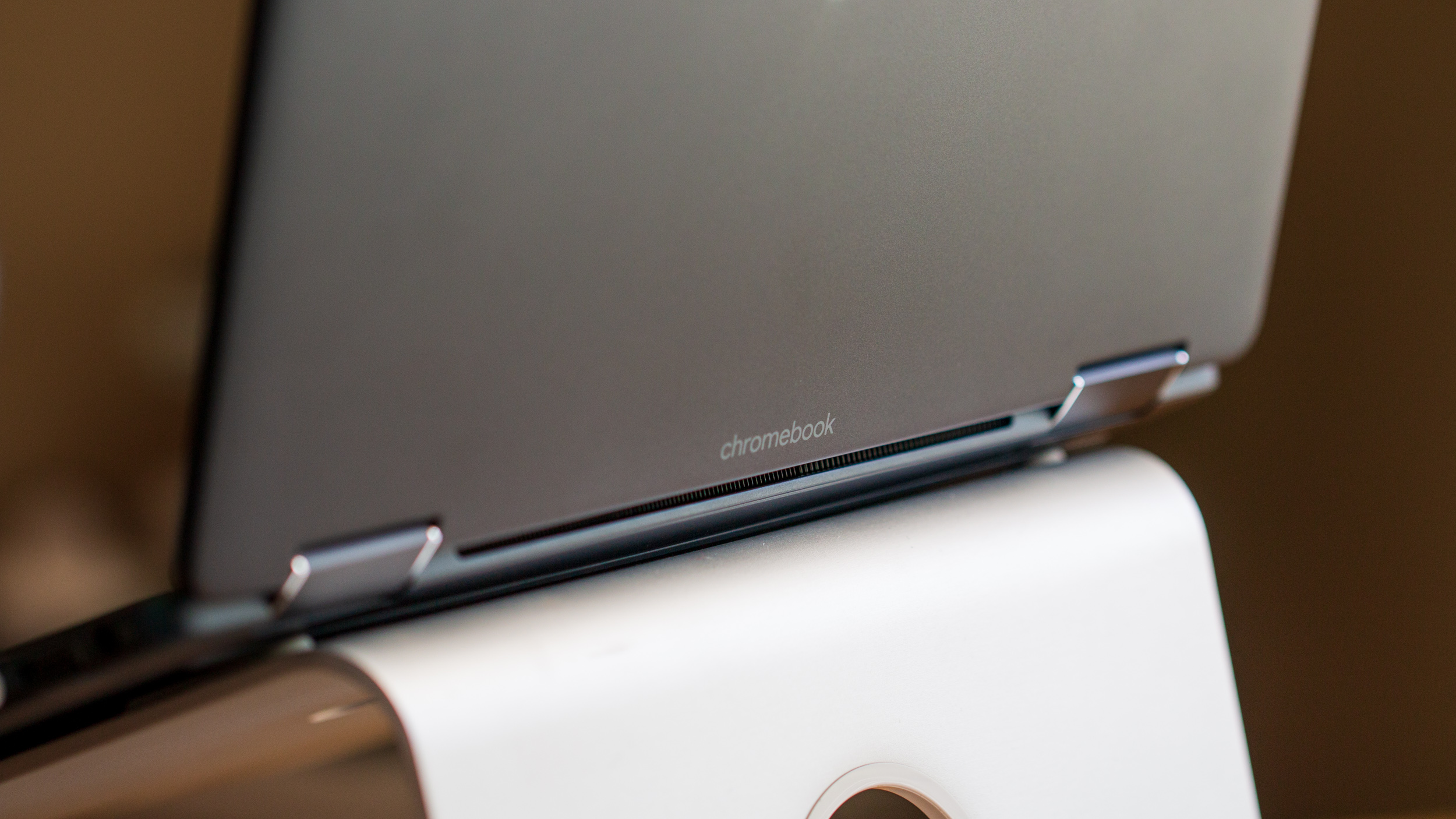
This all brings us to the biggest "problem" with the HP Elite Dragonfly Chromebook, and that's the price. At its base configuration, with an Intel 12th-gen Core i3, 8GB of RAM, and 128GB of storage, HP lists its retail price at $1,149.
That's quite a hefty price tag, even considering everything that's included in the package. And if you want to max everything out, with a Core i7 chip, 32GB of RAM, and 512GB of storage, you're looking at a whopping $3,243, according to HP's configuration tool. But there's a catch with this, too.
There's no actual consumer-grade model of the Dragonfly using a Core i7 chip. Instead, you'll have to spring for an Enterprise model, and even then, the above configuration won't ship until January 2023.
There are various listings available at a few retailers besides HP, notably B&H Photo, but even with the Core i7 processor, you are "stuck" with 16GB of RAM and a 256GB SSD.
HP Elite Dragonfly Chromebook: The competition
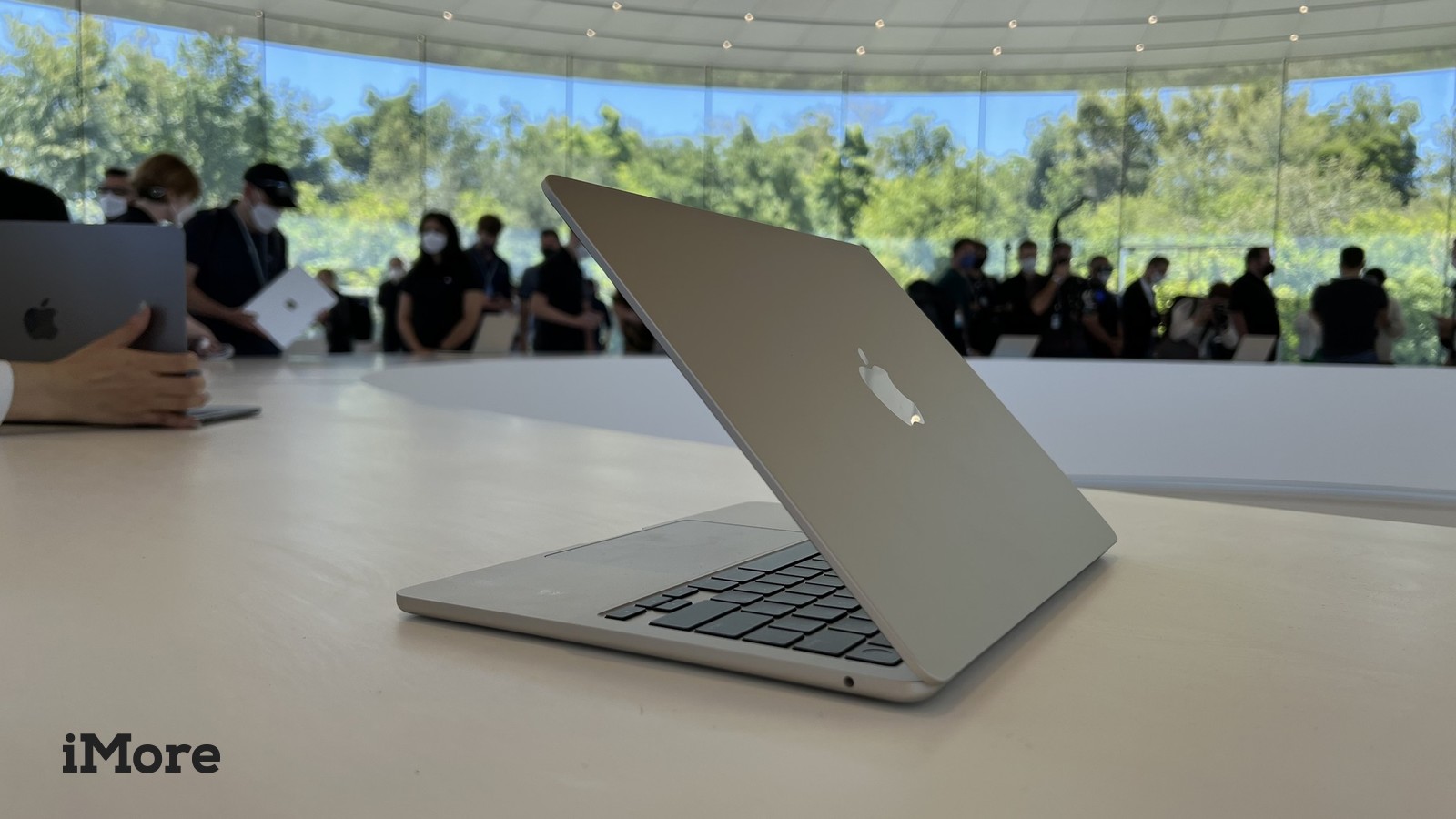
If you're looking for a direct comparison to the Dragonfly Elite Chromebook, you'll have to go outside the ChromeOS world to find it.
Apple's 2022 MacBook Air M2 is probably the closest, as the most similar configuration to the top-of-the-line Dragonfly is priced at $2,099. That's with 24GB of RAM and 1TB of storage. Then there's the question of whether you would want to switch from ChromeOS to macOS, which is a comparison for another time.
In the Chromebook space, the ASUS Chromebook CX9 is the closest in price, if you can manage to find one in stock anywhere. But that's using Intel's 11th-gen chips, and not the latest 12th-gen iterations. Instead, the only current offering from ASUS using the 12th-gen is the Chromebook Flip CX5, which is available from Best Buy, but is only available with an Intel Core i3 processor.

As for Acer, its new Chromebook Spin 714 is also now available from Best Buy, for a substantially lower price. But even with its garaged USI stylus, there's only one configuration available, which uses the 12th-gen Core i5, 8GB of RAM, and a 256GB SSD.
From an Enterprise perspective, Lenovo's ThinkPad C14 Chromebook is available and matches up quite well on the spec sheet. However, the only model that you can purchase right now is the Intel Core i5 version, with 8GB of RAM and a 256GB SSD. Much like the other competitors mentioned, we're expecting more configurations to be made available, we just don't know when.
HP Elite Dragonfly Chromebook: Should you buy it?

You should buy this if:
- Money isn't an object
- You want the most powerful Chromebook ever released
- You want a Chromebook (or laptop) with a haptic trackpad
- You're tired of macOS and Windows
You shouldn't buy this if:
- You're on a budget
- You need all-day battery life
When you look at everything that the HP Elite Dragonfly Chromebook has to offer, it's without a doubt, the most premium Chromebook that has come across our desk.
There are a lot of highlights here, such as the sublime-to-use haptic trackpad, the multitude of configurations, and included USI Digital Pen. And the performance is everything you could want from a Chromebook being powered by Intel's latest chipset. Plus, it's likely only a matter of time before the Dragonfly gets "white-listed" for the Steam Alpha program.
But just because the Dragonfly has all of these extra features, does that necessarily mean that it's the best? That's a tough argument to make because unless you really want to compare it to the Apple MacBooks and Microsoft Surfaces of the world, you don't need the Core i7 with 32GB of RAM to get things done on a Chromebook. Or any laptop for that matter.
The Elite Dragonfly Chromebook is an outlier, and while it's clear this was designed with the Enterprise market in mind, there's more to it than that. HP is showing the world that you can consider a Chromebook alongside a MacBook or Surface Laptop when you're looking for premium laptops. All of the bits and bobs are there, and there are enough extra features to warrant a second look.
And honestly, this is the first Chromebook that I've actually considered selling my MacBook Pro for. But I'm an outlier, just like the Dragonfly.
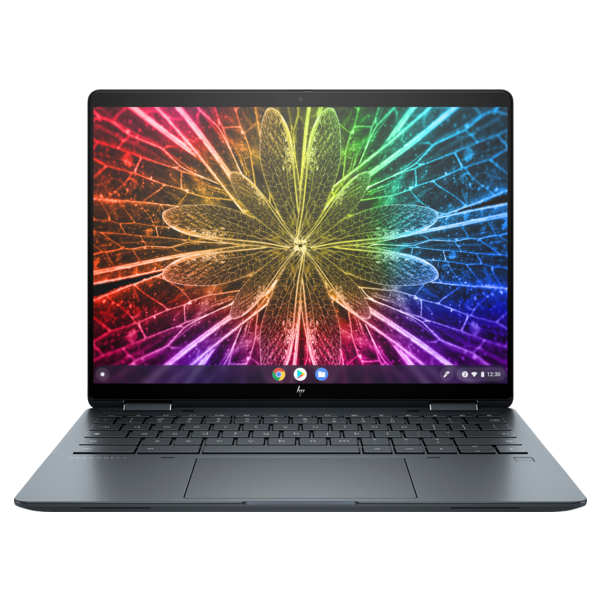
Incredible and expensive
The HP Elite Dragonfly Chromebook has practically everything you could want in a high-end laptop. It's capable of challenging the best MacBooks and Windows laptops, but it also comes with a hefty price tag and confusing configurations.

Andrew Myrick is a Senior Editor at Android Central. He enjoys everything to do with technology, including tablets, smartphones, and everything in between. Perhaps his favorite past-time is collecting different headphones, even if they all end up in the same drawer.
